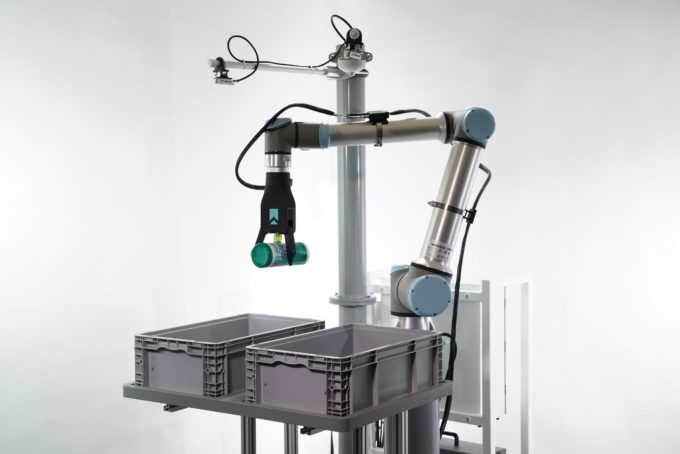Yaro Tenzer may have co-founded a business with “robotics” in the name, but as far as he’s concerned, it’s a data company.
That’s because of how much robots need to learn in order to perfect picking up objects—something that comes naturally to humans, but is extremely complicated to replicate.
The RightHand Robotics (RHR) machines utilize data to understand the task, and then use suction and fingers to grab objects of varying sizes and textures. If the robot misses, it tries again from another angle. If an object’s in the corner of a box, the robot has the skill to move it to an easier spot.
“When talking about the value our robots provide, we talk about three Rs: It’s a wide range of objects, reliable, and high-rate,” explains Tenzer, the co-founder of RHR.
Three trends came together to boost RHR’s invention of a robot with impressive hand-eye coordination: advances in grippers and cameras and the reduced cost of data gathering and processing.
A fourth trend launched their market. As e-commerce explodes and the market demand for fulfillment times grow ever shorter, there’s a growing urgency to assemble all the online orders. With increasing complexity in warehouse operations, warehouse jobs are becoming increasingly undesirable and include significant overnight work, Tenzer explains—and companies can’t keep up with the staffing and fulfillment demands.
“The only sustainable way to make e-commerce order fulfillment work is to automate it,” he says.
Automating these e-commerce jobs also reduces transportation emissions. Warehouses are typically in remote areas, which means significant travel for workers and deliveries. With robots doing the order fulfillment, warehouses could be built underground in cities in spots that wouldn’t be desirable or potentially even safe for human workers—which would reduce these transportation needs and provide another opportunity for automation to step in.
Today, RHR robots are deployed in North America, Europe, and Japan, and have picked more than 14 million items. The company employs about 60 people, with hiring in full-swing, and works out of a 20,000-square-foot space just a few minutes away from Greentown Labs. RHR is also opening an office in Japan under the subsidiary RightHand Robotics GK.
RHR joined Greentown in 2015, and graduated in 2017.
“The connection between people who are trying to help you as a company; the environment where you have other startups in a quite similar stage; having the facilities to actually build robots, having access to hardware; and the culture of collaboration and thinking together—these four things were extremely helpful for us,” Tenzer says.
Greentown Labs is a community of bold, passionate entrepreneurs creating solutions for today’s biggest climate and environmental challenges. Located in Somerville, Mass., the Greentown Labs Global Center for Cleantech Innovation is the largest cleantech incubator in North America, operating a 100,000 sq. ft. campus comprised of prototyping and wet lab space, shared office space, a machine shop, electronics lab, and a curated suite of programs and resources. Greentown Labs is home to more than 90 startups and has supported more than 210 since its inception.

